Browse 28 of the most important, engaging topics in chemistry with Virtual Collections released by ACS Publications journals in Q4 2020.

ACS Publications regularly produces collections of the most important chemistry research topics. These Virtual Collections of the most important chemistry research topics bring together the most important ideas in the field in a variety of ways, including Special Issues and ACS Selects from across the portfolio journals. These collections reflect the most important chemistry research topics of current scientific interest and are designed for experienced investigators and educators alike.
Browse 28 of the most important, engaging topics in chemistry with Virtual Collections released by ACS Publications journals in Q4 2020:
Crystalline Molecular Materials: From Structure to Function

This Virtual Special Issue focuses on the design and study of materials wherein the target properties arise from, or are enhanced by, the three-dimensional assembly of molecules in a solid phase. The “structure−function” relationship transcends the nature of the individual molecule, and supramolecular organization is a key component in the material’s properties. The goal of this issue is to assemble contributions from a broad community of scientists with similar research interests, as defined by the need to understand and manipulate the bulk assembly of molecules. Placing emphasis on a common interest in supramolecular architecture, this issue showcases work in apparently disparate fields, including molecule-based magnetism, rare zero thermal expansion properties, and catalytic activity.
Materials for Thermoelectric Energy Conversion
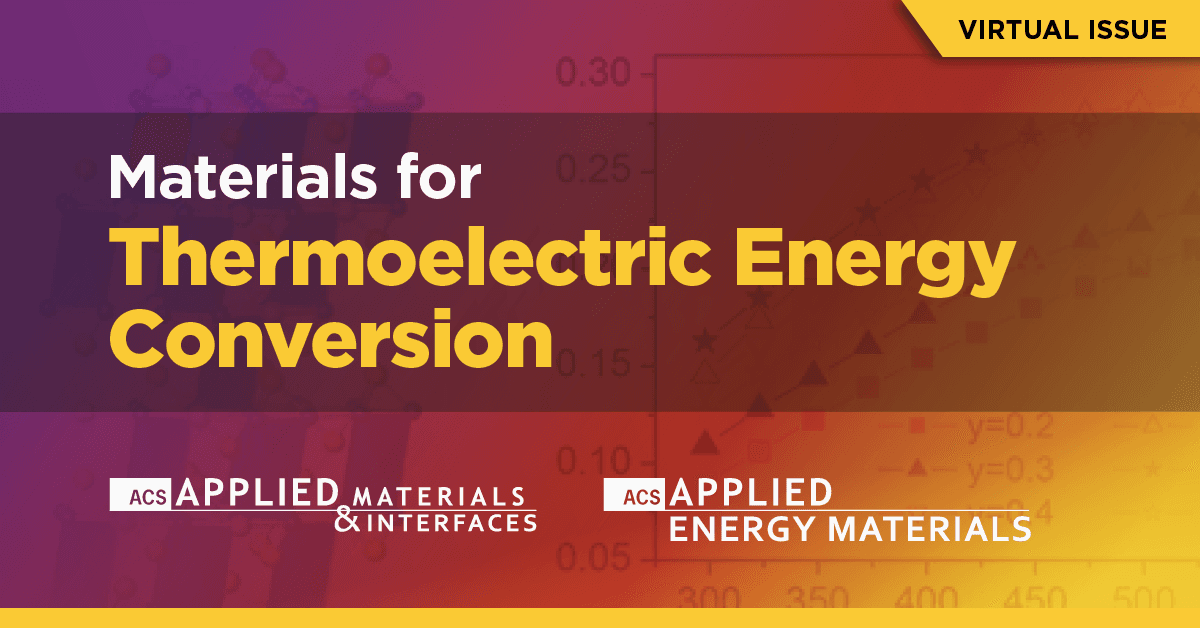
This virtual issue of ACS Applied Materials & Interfaces and ACS Applied Energy Materials presents cutting edge articles in the field of Thermoelectric Energy Conversion. Thermoelectric materials and devices are central for energy conversion and management as they convert waste heat into electricity. Given the ubiquitous nature of heat, thermoelectric materials provide total-package solutions to mitigate environmental crisis and energy needs. The realization of this has caused a surge in the development of high-performance, environmentally benign, robust, and earth-abundant inorganic materials, which can be used in heat to electrical energy generations in power plants, space, automobiles, households, battery technology, and data centers. Interestingly, flexible thermoelectric materials, mainly based on organic/polymer materials, have successfully been integrated into body-worn fabrics and watches, which simply utilize body heat to generate electricity. Furthermore, using the Peltier effect, thermoelectric coolers are developed and are one of the mainstays in the consumer market for refrigeration purposes, especially for portable applications. Hence, thermoelectricity is foreseen as a potential frontrunner in energy management for the near future.
Interfacialscience Developments at the Chinese Academy of Sciences
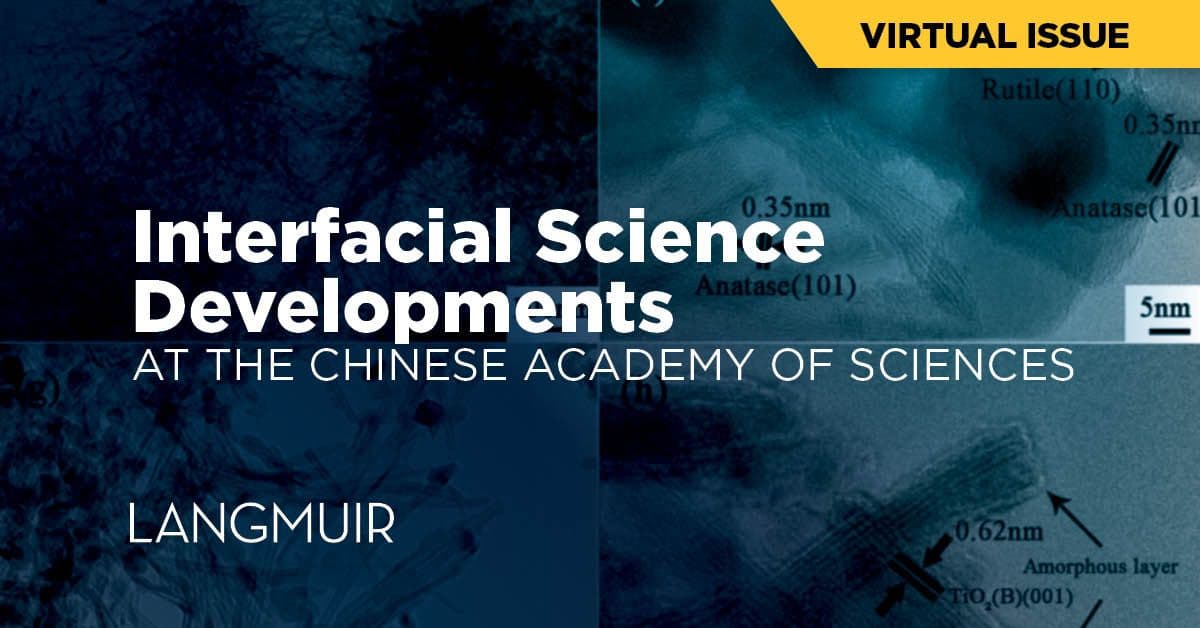
This virtual issue is a sampling of some of the most recent work from the Chinese Academy of Sciences, with an emphasis on work from this year (2020) so far. The 46 articles in this virtual issue cover a broad range of research topics, examples of which include Janus particle engineering and interfacial assembly, surface modification of colloid particles, stability of water monolayer in mineral under high pressure, nano-bubbles adsorption on surface, switching of underwater superhydrophilicity and superoleophobicity, nanostructured de-icing surface, lithium ion battery anode binder, bio-inspired smart liquid directional transport control, corrosion resistance of alloys, behavior of polymers at solid/liquid interface, and effect of polymer conformation on protein resistance.
Celebrating 90% Completion of the Human Proteome
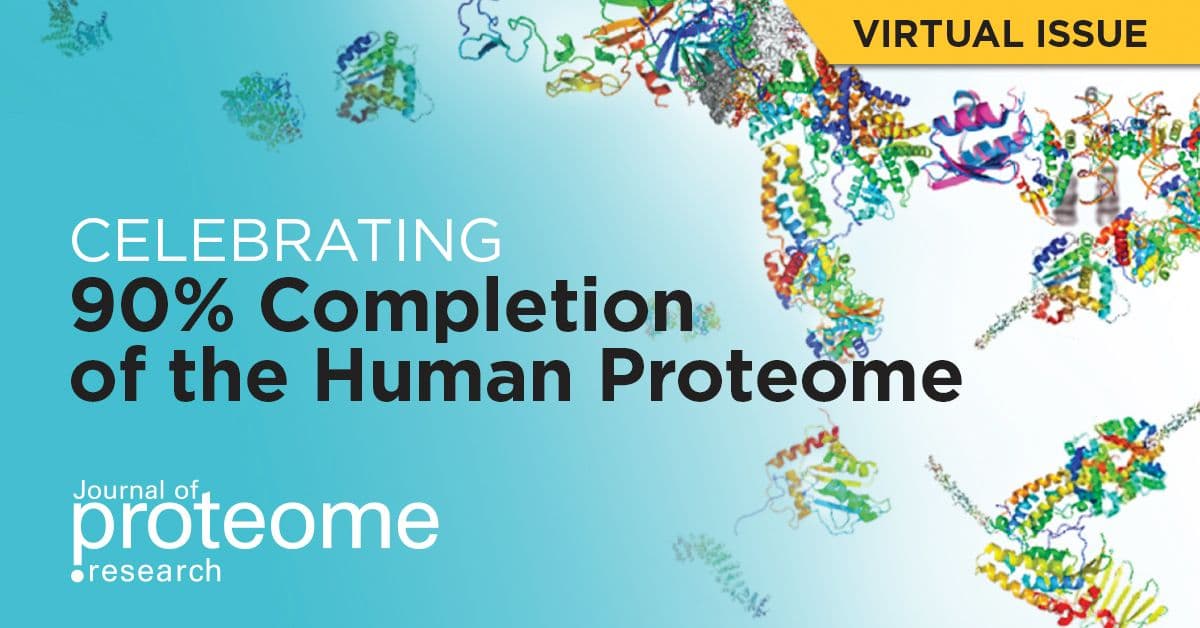
Twenty years after the establishment of the international Human Proteome Organization (HUPO) and ten years after its launch of the Human Proteome Project (HPP), researchers have much to celebrate. Today, HUPO will release the draft human proteome at the 19th Human Proteome Organization World Congress, connecting virtually, with this Virtual Issue published in the Journal of Proteome Research.
Read the Issue.
***
Nanomaterials-based Membranes for Chemical Separations
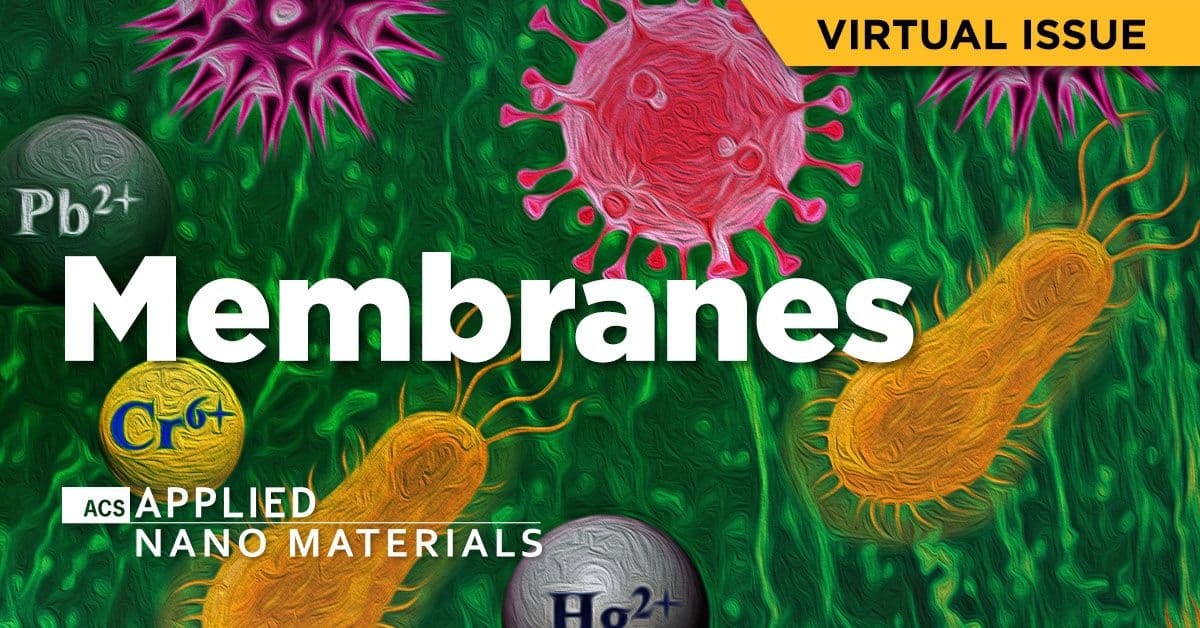
Membranes are a critical area of research in academia and have been used in industrial applications for decades. Membrane-based separations are desired in industry because they can be highly energy efficient and up to an order of magnitude less expensive than other techniques such as distillation. In addition, these separations are easily scaled to industrial levels so that advances in the laboratory can be translated to real applications. The key challenges in this field are how to separate chemicals with similar sizes by having a high flux for only one chemical through a membrane. This difference in flux should translate into a high selectivity for one chemical over one or more other chemicals present in a mixture. An unfortunate trade-off in membrane-based separations is that as the permeation of a chemical increases, the selectivity of the membrane will often decrease. To address these challenges, scientists often use cross-linked polymers with ill-defined pores, hard materials such as zeolites with well-defined pores, 2D materials, coated nanofibers, carbon nanotubes, metal nanoparticles, or other nanomaterials.
Organic Chemistry in China: Synthetic Methodology, Natural Products, and More

During the past 20 years, China has become a powerhouse in chemistry research, now leading globally in submissions of research articles to chemical journals. In recognizing these developments, Organic Letters presents a Virtual Issue that includes a collection of 25 research articles contributed by Chinese chemists during 2019-2020, selected from among the more than 1,000 articles published in the journal from China over this period.
Read the Issue.
***
Advances in Microfluidics Research

This Virtual Issue highlights articles published in Analytical Chemistry that showcase advances in microfluidics research over the past several years. The articles below are separated by sub-field and span research on virus detection to cell manipulation to 3D-printing, and are all at the cutting edge of microfluidics technologies. The thirty articles included in this collection were selected by Associate Editor Yoshinobu Baba and include previous winners of the Chemical & Biological Microsystems Society (CBMS)/Analytical Chemistry co-sponsored Young Innovator Award.
Chemistry in Korea: IBS and Beyond
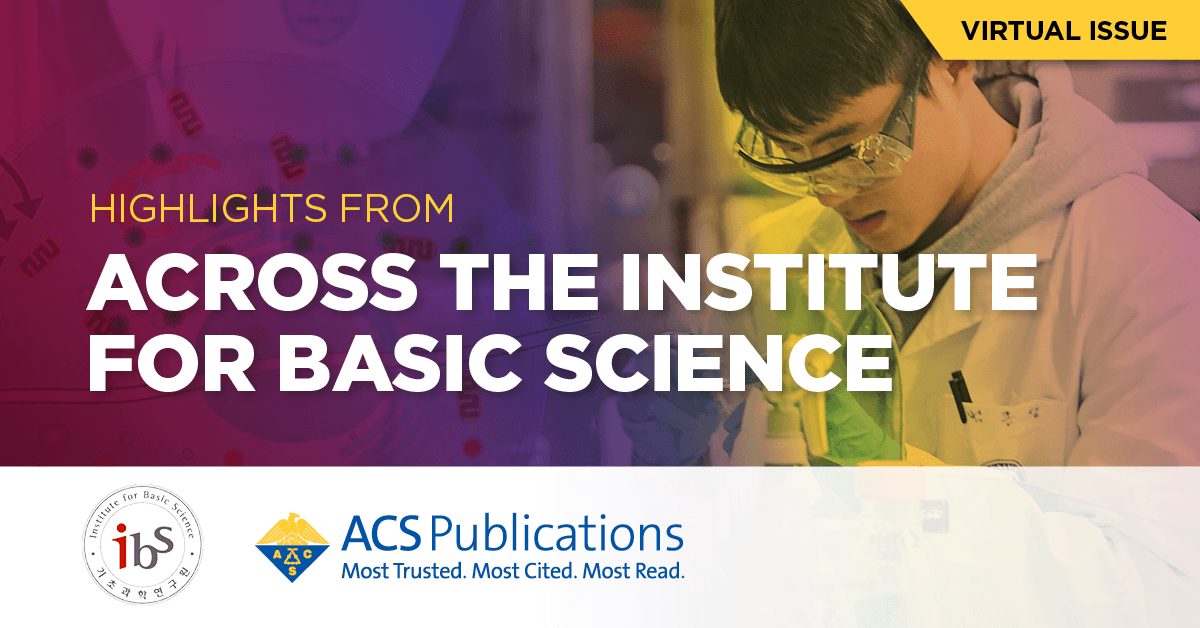
This virtual issue of “Chemistry in Korea: IBS and Beyond” highlights the latest contributions from eight IBS centers along with exciting advances from other emerging scientists in South Korea. Topics encompass a wide range of chemistry and its cross-boundary researches from theory and simulations, nanomaterials, molecular synthesis, catalysts, spectroscopy, supramolecular chemistry, soft materials to nanomedicine.
Read the Issue.
***
Highlighting Analytical Chemistry 2020 Advisory Board Members
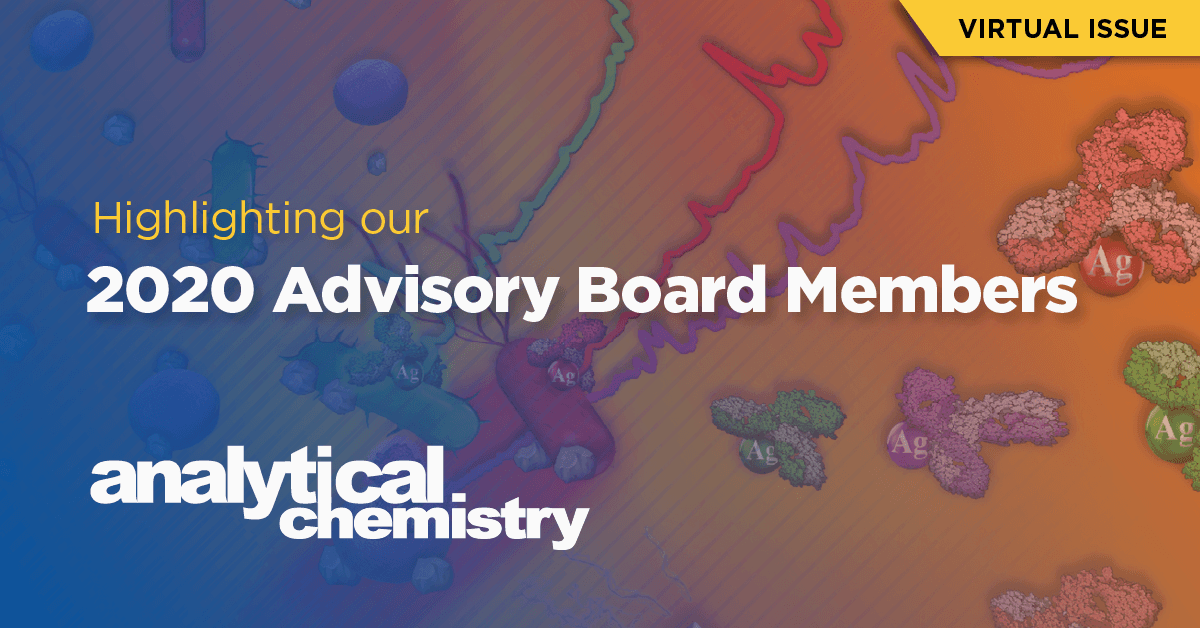
The members of Analytical Chemistry‘s Editorial Advisory Board (EAB) and Early Career Board (ECB) panels devote substantial voluntary time and energy to support Analytical Chemistry and deserve special recognition for their contributions. In recognition of their service, this new virtual issue is dedicated to the members of both the journal’s EAB and ECB, with each selecting one of their recent Analytical Chemistry articles to highlight.
Read the Issue.
***
A Bright New World of Ferroelectrics: Magic of Spontaneous Polarization

Ferroelectric materials featured with spontaneous polarization have experienced a century of vigorous development. The permanent electric dipole moment makes ferroelectric an outstanding multifunctional material for a wide range of applications. Ferroelectrics with unique coupling effects among electric, optical, mechanical, thermal, and magnetic orders, have been developed for a wide range of functional devices and triggered a new world-wide wave of ferroelectric research. This virtual issue highlights some of the key state-of-the-art findings in ferroelectrics published in ACS Applied Materials & Interfaces and ACS Applied Electronic Materials, and the editorial attempts to reflect the rapid development and provide a perspective in this field.
Peter J. Rossky Festschrift

This Virtual Special Issue honors Professor Peter J. Rossky and his contributions to the field of physical chemistry.
Read the Issue.
***
Computational and Experimental Advances in Biomembranes
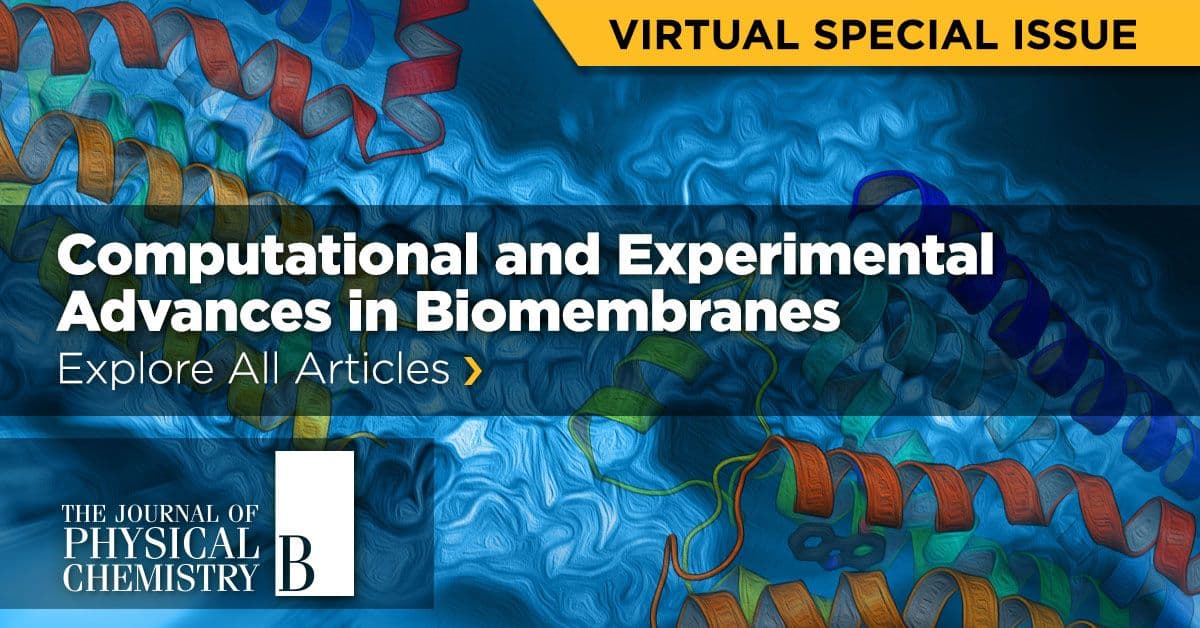
As an integral component of cellular architecture and signalling, cell membranes are central to cell physiology. Comprising a vastly heterogeneous mixture of proteins and lipids, cell membranes are constantly adapting their structural organization to regulate cellular processes. Malfunction at the level of lipid-protein interaction is implicated in numerous diseases, and hence, understanding cell membrane organization at the molecular level is of critical importance. The collection of articles in this Virtual Special Issue from The Journal of Physical Chemistry B provides a survey of the advances in both computational and experimental characterization of the complex processes underlying the behavior of cellular membranes.
Read the Issue.
***
Sensors and Industry

In this virtual issue, ACS Sensors and Analytical Chemistry highlight 30 of these outstanding industrial co-authored papers recently published in the two journals. The breadth of the articles in this collection emphasizes the incredible research on diagnostic methods being performed in both universities and industries, and highlights the benefits of collaboration between the two.
Read the Issue.
***
Machine Learning in Physical Chemistry
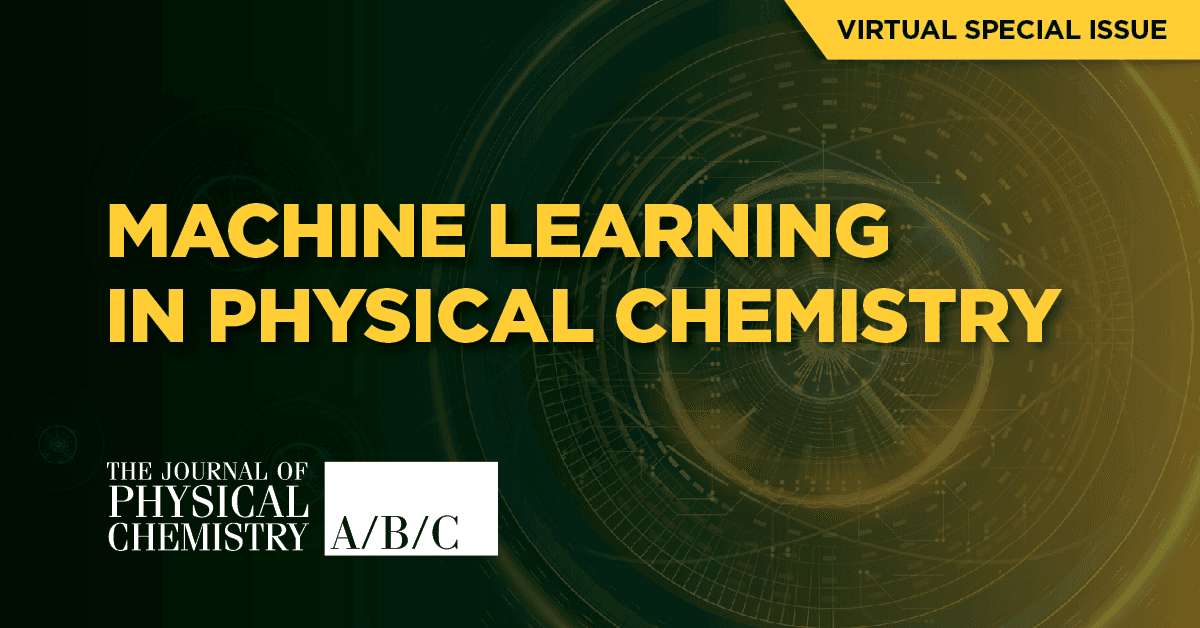
Physical chemistry stands today at an exciting transition state where the integration of machine learning and data science tools into all corners of the field is poised to do nothing short of revolutionizing the discipline. These powerful techniques – when appropriately combined with domain knowledge, tools, and expertise – have led to new physical insights, better understanding, accelerated discovery, rational design, and inverse engineering that transcend traditional approaches to materials, molecular, and chemical science and engineering. This collection of nearly 150 manuscripts from The Journal of Physical Chemistry A/B/C and The Journal of Physical Chemistry Letters reflects the relevance and popularity of this topic in physical chemistry by both the depth and breadth of excellent articles in this exciting collection.
Self-Healing Materials
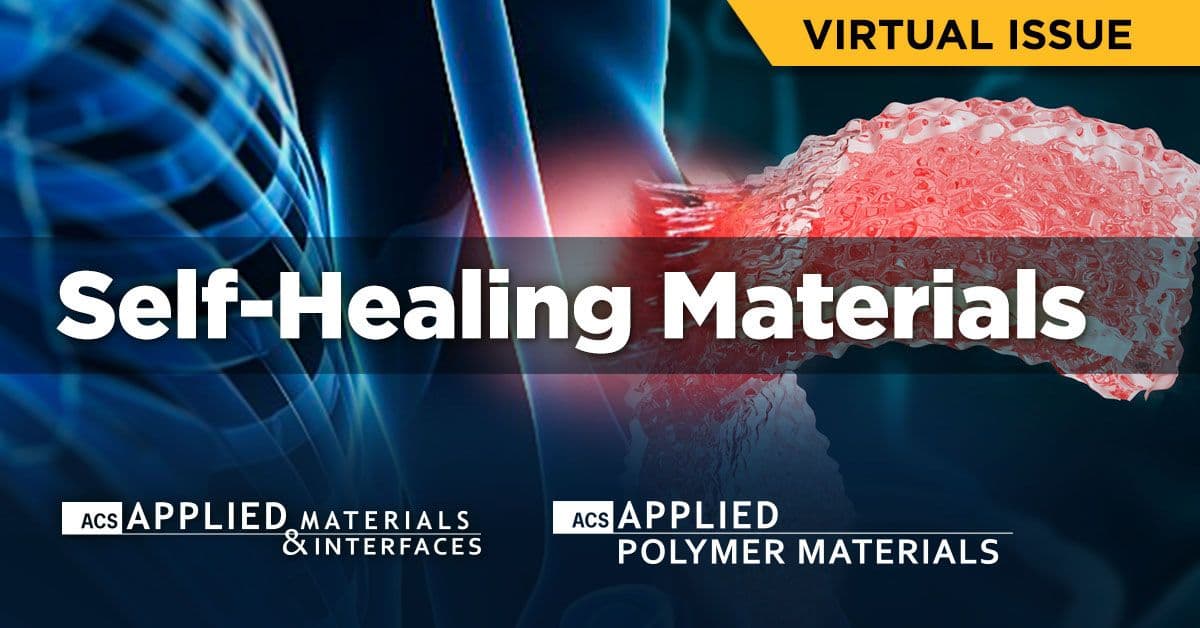
This is a spotlight on applications discusses developments made over the last six years that have enabled the fabrication of increasingly high-performance spray-coated perovskite solar cells. In particular, the various approaches adopted to spray-cast perovskite films (one-step vs two-step processes) ware charted and the development of sophisticated techniques used to control thin-film crystallinity is described. Finally, remaining research challenges are discussed that, once solved, may allow the mass deployment of low-cost solar energy.
Read the Issue.
***
Women in Mass Spectrometry

This virtual issue was assembled to feature talented women mass spectrometrists who publish in JASMS as the corresponding author. The articles compiled are among the most highly cited that were published in the journal in the last 5 years, regardless of gender, and are representative of the best mass spectrometry science reported in JASMS.
In Memory of Mario Molina (1943-2020)
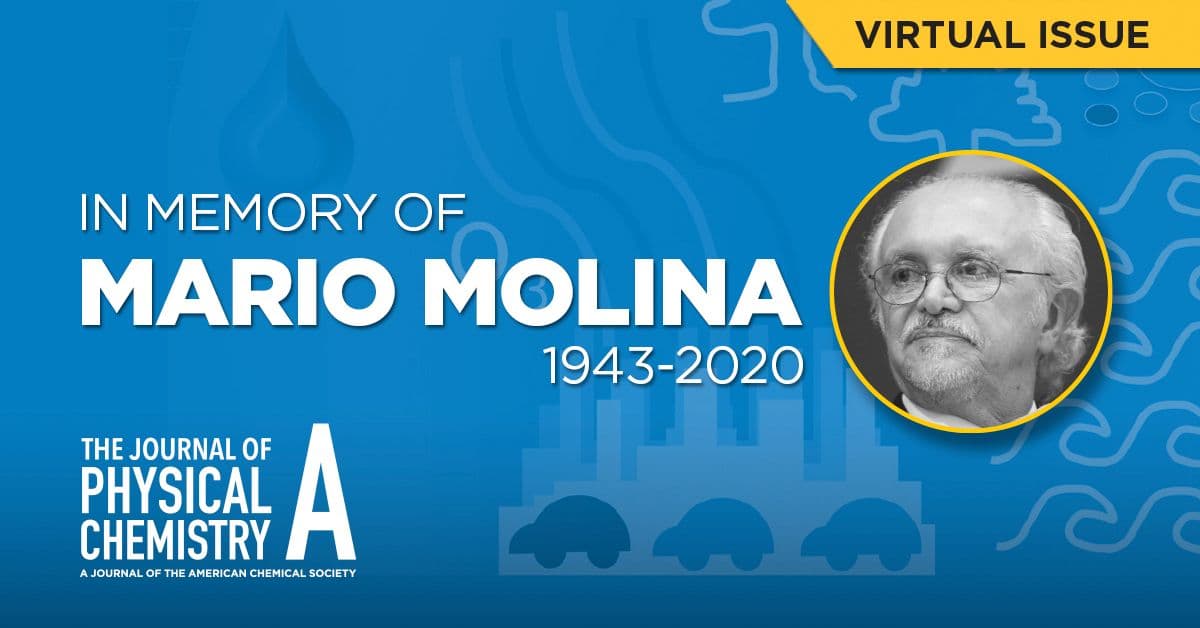
Mario Molina was a Mexican chemist who shared the 1995 Nobel Prize in chemistry with the late F. Sherwood Rowland of UC Irvine and Paul Crutzen of the Max Planck Institute for Chemistry in Mainz “for their work in atmospheric chemistry particularly concerning the formation and decomposition of ozone.” Molina passed away in his birth city of Mexico City at age 77 on 7 October 2020. A physical chemist at heart, Molina published about 80 papers in The Journal of Physical Chemistry. His mentees remember him by celebrating 30 of them. His indelible legacy lives on through his publications, his collaborators, the scholars that he trained, the innovations in experimental design he made, the thousands who were inspired and informed by his science communication, and the millions whose quality of life improved thanks to his work on stratospheric ozone depletion and air quality in megacities.
Women Scientists at the Forefront of Energy Research: A Virtual Issue, Part 3
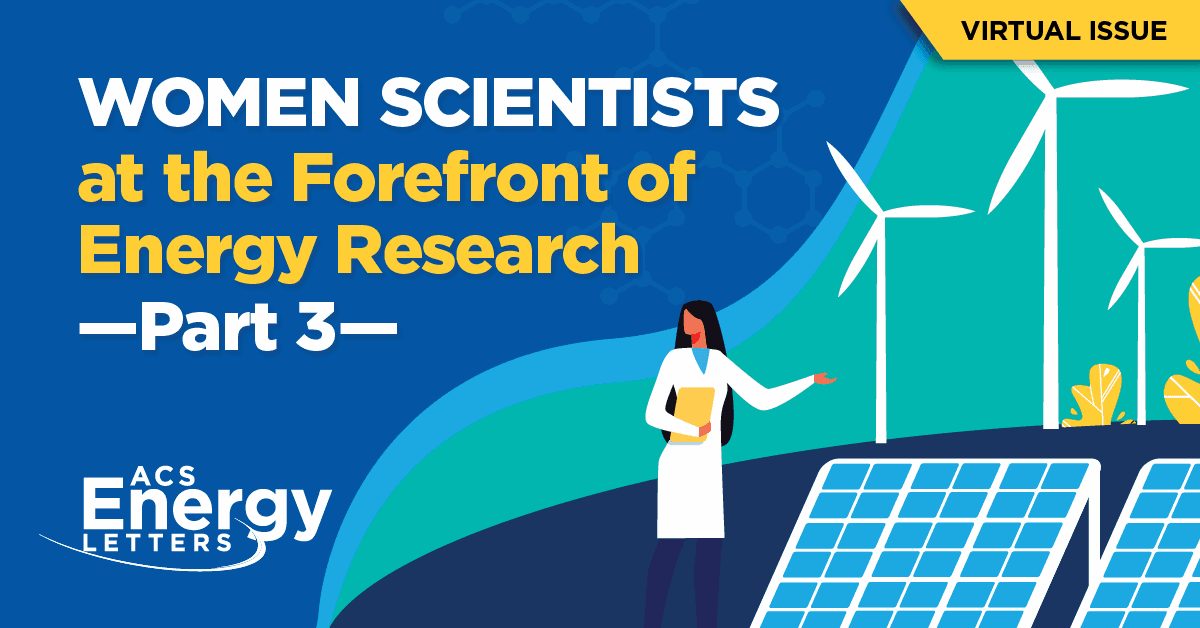
This is the third part of a series that recognizes women energy researchers who have published new advances from their laboratories in ACS Energy Letters. The inspirational stories and advice to newcomers in the field contained in this issue should provide motivation to advance the scientific research in energy conversion and storage. Through their personal reflections, these researchers discuss the successful career paths they have taken to become leaders in the scientific community.
Read the Issue.
***
Scalable Organic Chemistry: A Virtual Issue to highlight Organic Process Research & Development

From small-scale use in academic research to large-scale application in industrial processes, only select chemistries make the cut to be relevant throughout the scale-up process. This virtual issue showcases a collection of innovative and industrially-relevant papers on key topics from academic and industrial chemists in Organic Process Research & Development.
Virtual Issue in Memoriam of Dr. Alan Poland (1940-2020)
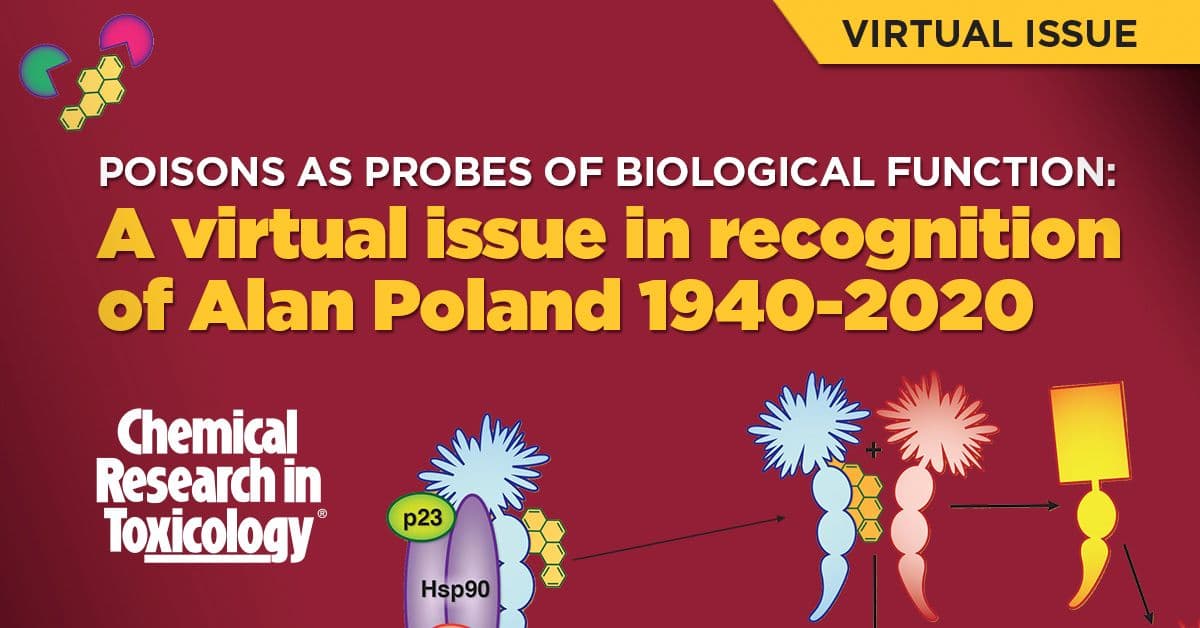
Dr. Alan Poland was a major influence on the development of modern molecular toxicology and the understanding of how chemicals cause cancer. He is most widely known for his groundbreaking work to explain the adverse effects of dioxins, chemicals and related environmental pollutants.
Read the Issue.
***
Deep Eutectic Solvents
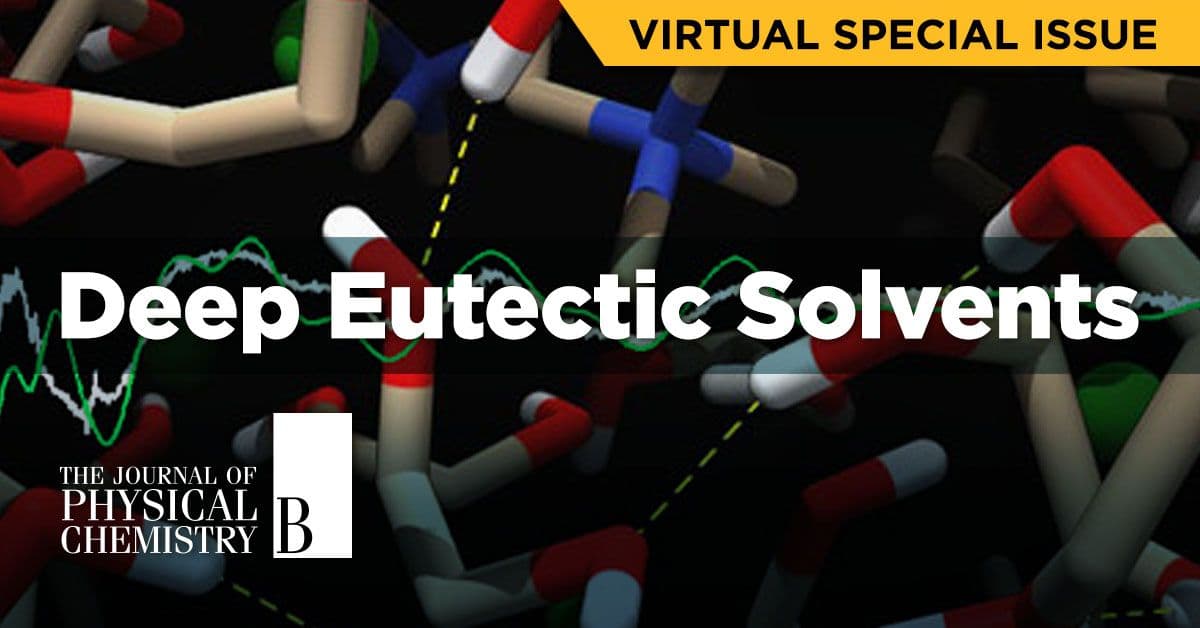
This virtual issue focuses on scientific and engineering advances related to Deep Eutectic Solvents. It includes papers that have appeared in the last two years in ACS Sustainable Chemistry & Engineering, Industrial & Engineering Chemistry Research, Journal of Chemical & Engineering Data, and Journal of Physical Chemistry B and C.
Read the Issue.
***
Celebrating ACS Sensors‘ Editorial Advisory Board

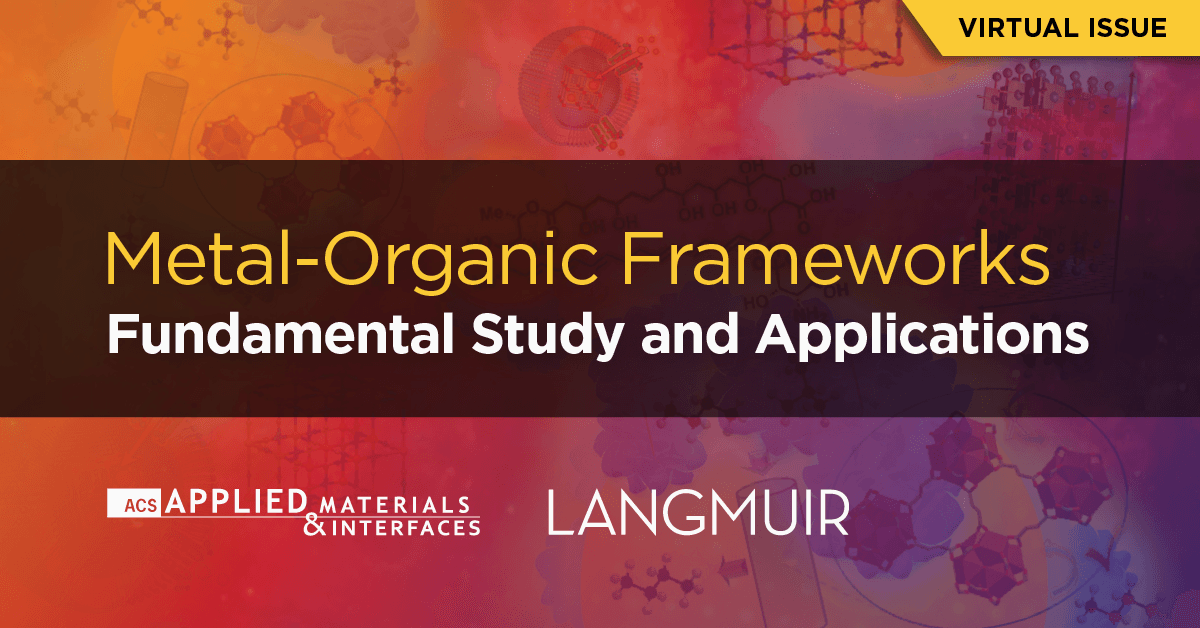
Exciting developments in metal-organic frameworks (MOFs) are the focus of this Virtual Issue that is jointly produced by Langmuir and ACS Applied Materials & Interfaces (ACS AMI). These two journals publish complementary and ground-breaking work on interfacial science. ACS AMI has a strong focus on practical applications whereas Langmuir encourages reports of both fundamental and applied nature, when rational design is a highlighted feature of the work.
Read the Issue.
***
Inorganic Synthesis in Uncommon Reaction Media

Water and organic solvents have long been the most common reaction media for chemical synthesis. Nevertheless, given limits in solubility and the need for extreme temperatures sometimes, especially for inorganic substances, chemists have had a growing interest in moving to “uncommon” reaction media to improve the access to certain compounds or to permit the fundamental study of the behavior of chemicals under unique conditions. In this Virtual Issue, “Inorganic Synthesis in Uncommon Reaction Media,” Guest Editor Julia Chan and Associate Editor Stefanie Dehnen highlight recent reports from Inorganic Chemistry and additionally from Chemistry of Materials and Crystal Growth & Design that feature reactions taking place in currently used uncommon systems: molten metals (metal flux), molten salts (nonmetal flux), ionic liquids (ionothermal if carried out under elevated temperatures), supercritical solvents (solvothermal), and liquefied gases.
Read the Issue.
***
The Challenge of Antibacterial Drug Permeation and Current Advances
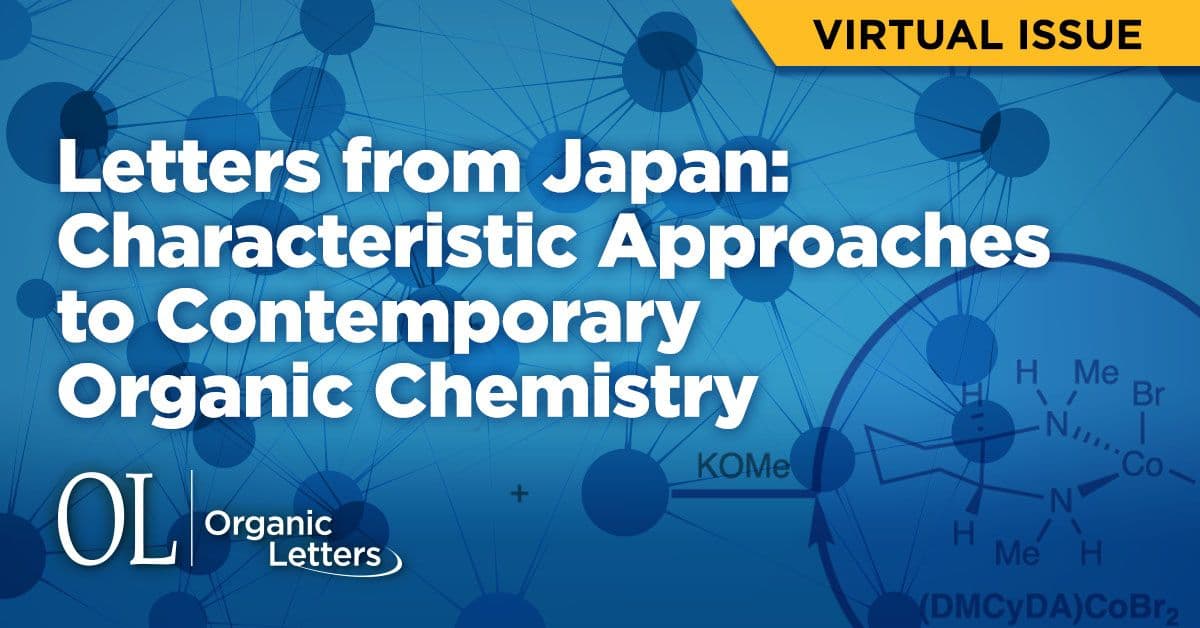
Recent advances in the area of drug permeation feed the pipeline of antibacterial agents with new and improved activities and keep the ever-changing landscape of antibiotic resistance effectively managed by small molecule therapeutics. The articles included in this Virtual Issue broadly represent three areas of research: 1) new experimental approaches to analyze intracellular accumulation of compounds in whole cells and compound permeation across model membranes; 2) new computational models of drug permeation across the outer membrane and integrated kinetic models of drug permeation across membranes with active efflux; and 3) new antibiotic screening campaigns and exploration of synergistic drug combinations bypassing bacterial permeation barriers.
Read the Issue.
***
Organic Chemistry in Japan: A Strong Foundation and Honorable Tradition

Organic chemistry has a strong foundation and honorable tradition in Japan, centering in recent decades predominantly on the development of synthetic methodologies, particularly in an interdisciplinary fashion focusing on cross-coupling and C-H activation and functionalization, the total synthesis of natural products, chemical biology research, supramolecular chemistry, and applications of (opto)electronic materials—all with an eye toward fostering international collaborations. This new Organic Letters Virtual Issue features 25 selected articles form 2019-2020 to highlight these achievements.
Read the Issue.
***
EPA at 50
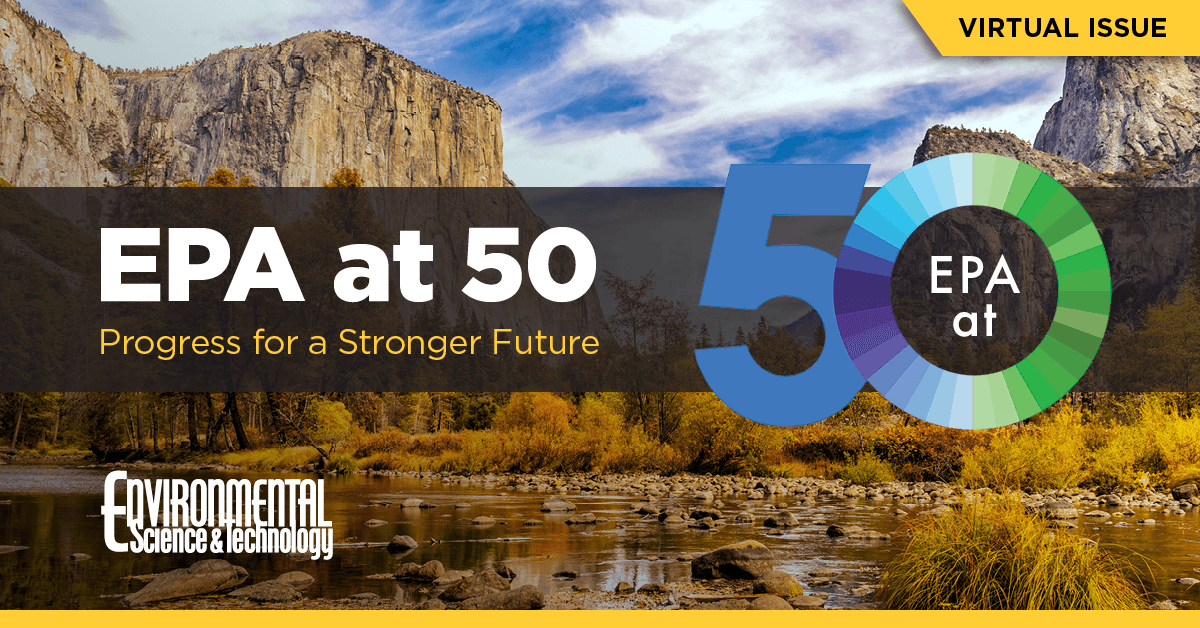
This virtual issue in Environmental Science & Technology (ES&T) marks the 50-year anniversary of the United States Environmental Protection Agency (US EPA). Recognizing this significant milestone brings an opportunity to reflect on the enormous achievements and impact this federal agency has had on the remediation and protection of the environment, reaching both domestically within the USA and globally since its official beginnings on December 2nd, 1970.
Read the Issue.
***
Bioconjugate Chemistry 30th Anniversary Reviews

The breadth and impact of these 30th anniversary reviews demonstrate how the Bioconjugate Chemistry of today continues the forward-looking embrace of new science and systems while maintaining the old-fashioned virtues of scientific rigor and reproducibility.
